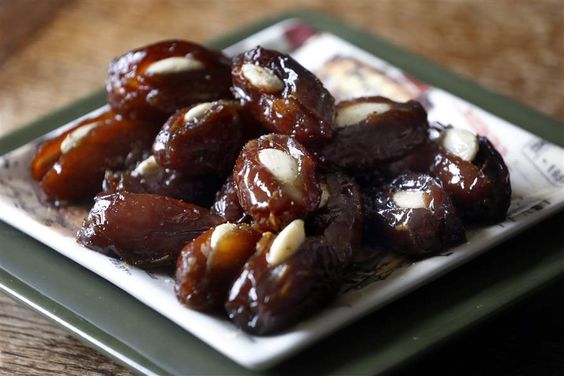19 Summer school teaching ideas students will love
In this guide
Studies have shown that summer school programs can “reverse summer learning loss, achieve learning gains, and give low-performing students the chance to master material that they did not learn during the school year”. (Jennifer Sloan McCombs et al., 2011)
Students attend summer learning programs for many reasons. When I was a young student, it was often misunderstood or downright feared, and I saw this reflected in my students when I taught in the same school district many years later. This can make summer school lessons especially challenging.
However, many students discover that they do better with the shorter semesters, smaller classes, and more individualized teaching. Either way, there’s something for everyone in the ideas listed below.

Getting outside
1) The 5 senses scavenger hunt
Personally, I found the loss of summer to be one of the most common anxieties expressed by students about summer school. It’s a reasonable fear; after all, summer is usually a time for play and enjoying the warmer weather. However, there’s plenty of ways for students to hone social and critical thinking skills while doing exactly that.
While a scavenger hunt can be done indoors, it’s a great way to get students outside and enjoying the summer season. There are two ways to do the 5 senses scavenger hunt, but the an outline like this will work for both:
- Sound: Listen for a _____
- Smell: Sniff out _____
- Taste: Find something that _____
- Sight: Look for something something _____
- Touch: Find something _____
For more visual learners or younger students, try this visual sense chart.
- Give students something to search for, ex. Find something stinky/orange/wet/bumpy. Students could brainstorm a list before the hunt, or you can choose a list appropriate for their vocabulary.
- Send out students to find an example, or number of examples, of each sense that they can find.
2) Gardens from vegetable scraps
Vegetables like basil, scallions, cilantro, mint, pineapple, celery, and lettuce can be regrown from scraps. It’s easy to start them too: just put them in water or a small amount of soil, and you can repot them when they get big enough.
Aside from a fun, hands-on activity, this can be a great way to teach students about plant propagation.

- Herbs: Cut a stem and place it in a cup or bowl of water. Don’t submerge the entire stem. Place the cup in a bright area that’s out of direct sunlight. Roots should form in a few days!
- Sweet potato: Sweet potatoes are easy! Just plant the entire potato, or cut one in half and suspend it in a bowl of shallow water with toothpicks. Once the spouts grow a few inches, twist them off and place them in a small container of water. They can be planted in soil once the roots grow at least an inch long.
- Onions: Cut a one-inch piece off the root end of an onion and put in a bowl of shallow water or on top of soil. You can even put an entire onion in water!
- Romaine lettuce: Leave a few inches of the lettuce head base and place it in water (don’t submerge it). Remove outer leaves as the new ones come in.
- Green onions and scallions: After cutting off the rest of the scallion, keep the end of the onion with the roots attached. Place it, root down, in potting soil and place it somewhere where it can get sunlight. The onions will grow back in less than two weeks!
- If your students are up to the challenge, try regrowing mushrooms.
- Students in warmer climates can try regrowing a pineapple. If your class is in a cooler part of the world, you could regrow in the summer and bring the plant inside for the cooler seasons
If students need a primer on gardening, try a short video such as:
- Greenie Grows a Garden (Spanish/English) – K-2
- This introduction to careers in horticulture
- Explore how plants grow and reproduce with:
- Elementary: The Characteristics of Plants and Plant Structures and Functions
- Middle school: Reproduction in Plants Series
- High school: The Plants and the Bees: Plant Reproduction
3) The sandbox volcano
Supplies: a sandbox or box of sand, water, baking soda, a water bottle, food coloring.
This is a fun, outdoors spin on the classic baking soda and vinegar science experiment or younger students. Best of all, there’s no mess or cleaning up involved!
- Fill up your water bottle to a third full and add food coloring.
- Add around 5 teaspoons of baking soda and cap the bottle.
- Build a mountain out of sand around the bottle.
- Once the mountain is complete, uncap the water bottle and add around a cup of vinegar.
- Watch it erupt!
Tips and Tricks: You can add a few drops of dish soap for an even foamier eruption.
Science experiments for all ages: slimes and putty
These easy experiments can be a great way for younger students to explore chemistry or fun brain break for older students. We also all know that students love slime, even in higher grades.

4) Easy silly putty
Supplies: Liquid starch, food coloring, all purpose glue ex. Elmer’s, mixing bowl and spoon
- Mix 1 part liquid starch to 2 parts glue.
- Pour the ingredients into a mixing bowl and mix them together.
- Add food coloring. If students are making multiple colors, use one bowl at a time or different bowls for different colors.
- Knead the mix with your hands until most of the liquid is absorbed and the consistency seems like silly putty. You can drain excess liquid scratch or add extra glue if there’s consistency issues.
5) Edible slime
Supplies: Water, tapioca flour, saucepan, spoon, heat-safe bowl, food coloring, a heat source like a hot plate.
This experiment involves boiling liquid, so make sure to monitor students! Slime making is a great way for students to explore chemistry.
- Combine 2 cups of water and 3 teaspoons of tapioca flour in a saucepan and stir until it dissolves. Add 5 drops of food coloring.
- Bring the contents to a boil and cook for 5 to 10 minutes,
- Once the ingredients thicken up, scrape the bottom and sides of the saucepan with the spoon.
- Pour the slime into a heat safe bowl and let it cool.
Tips and Tricks: Cooking it for a shorter time will produce more liquidy slime, whereas a longer cooking time will produce gooier slime. The slime will thicken if you leave it out overnight.
6) Slime
Supplies: A mixing bowl, plastic container, measuring spoons, measuring cup, spatula, PVA white glue, water, soda baking soda, contact lens cleaning solution (with boric acid and sodium borate).
Some slime recipes use Borox soap, which is toxic if ingested. Soda bicarbonate and contact lens solution with boric acid is used as a safer alternative.
- Mix ½ a cup of water, ½ a cup of glue, and a few drops of food coloring together in a mixing bowl.
- Add ½ tsp of baking soda and mix.
- Add 2 tbsp of contact lens solution (the mixture will thicken and pull away from the edge of the bowl).
- Knead the slime for 5-10 minutes. The more kneading, the thicker and less sticky the slime.
- Store the slime in an airtight container.
Tips and Tricks: Students can add glitter, glow-in-the-dark-paint, tonic water to make slime that glows in a black light., or iron filling to make magnetic slime. Replacing water with 3 cups of shaving cream will make fluffy slime.
For more slime experiments, check out this recipe for Liquid Glass Slime and some experimentation with Slime Testing.
Fostering community
Volunteer work can give students a sense of purpose and achievement, all while fostering a sense of community. When I was in school, it took me many years to realize that volunteering looks different to everyone though. While many students may enjoy more direct engagement, such as in-person volunteer work and community events, other students (like I was) may be more comfortable in less social settings.
7) Writing letters
Letter writing campaigns and pen-pals were the kind of volunteer work I was more comfortable with as a student. Students can still make a meaningful impact without even leaving their classroom this way, and it’s also great for students who may have additional challenges with transportation and mobility.
Have students send cards, letters, and/or postcards to assisted living and nursing homes in your area, or team up with an organization like:
- Love Our Elders: Combats elderly social isolation and loneliness.
- Letters of Hope: Breaks the mental health stigma with social connection, kindness, and compassion one letter at a time.
- Cards of Hope: Makes sure young people in foster care receive birthday cards and letters of encouragement.
Letter-writing volunteering can help high school students meet their service-learning hours and stand out in college and job applications. More importantly, they’ll give students an opportunity to connect with their communities, develop new skills and interests, and find peers and mentors.
Additional letter-writing organizations for high school students include:
- Write for Rights: Amnesty International’s annual campaign for individuals around the world fighting for their human rights.
- Letters Against Depression: Handwritten letters to support individuals battling depression and other mental illnesses.
- Black & Pink National: A pen-pal program that supports incarcerated LGBTQ+ individuals.
8) Community engagement & volunteering
- Collect non-perishable food from neighbors, family, and/or a school drive and donate them to a local food pantry. Make sure to check your local food bank and pantry guidelines for what to donate.
- See if there’s a nearby community fridge in your area. Community fridges are often grassroots operations or through organizations like Freedge. Change X has an international map of over 500 locations.
- Volunteer at a local animal shelter.
- Help out a local community garden.
- Organize students to pick up litter at a local park or beach.
- Have students take a day trip to a local nursing home and spend time with the elderly.

Cooking up history
I love teaching history, and my favorite way is to engage students with what they’re learning by relating it to their own lives. Recognizing ourselves in the past through things like fashion, food, cultural representation, and storytelling makes history less abstract. More importantly, it helps students realize they’re not alone in their experiences.
Cooking is an excellent way to convince your children that, yes, they will actually use this knowledge in the real world. It makes the intangible tangible. It tells us who we are, it communicates our stories and allows us to hear others. We can travel through time by eating the foods our human ancestors did.
Robicelli
Cooking is a great way to help students contextualize history and learn valuable life skills. Aside from the history, recipes are also a great way for students to use mathematical thinking in everyday life.
9) American history with the Senate Bean Soup
Suitable for elementary (with assistance) and up.
According to the US Senate, “Bean soup has been a required and beloved menu tradition in Senate restaurants for more than a century.” Its origins and credits are contested between two 19th and 20th century senators. Senator Fed Dubois’ features mashed potatoes but Senator Knute Nelson’s simpler recipe is still served today:

- 2 pounds dried navy beans
- 4 quarts hot water
- 1 1/2 pounds smoked ham hocks
- 1 onion, chopped
- 2 tablespoons butter
- salt and pepper to taste
Wash the navy beans and run hot water through them until they are slightly whitened. Place beans into a pot with hot water. Add ham hocks and simmer for approximately three hours in a covered pot, stirring occasionally. Remove ham hocks and set aside to cool. Dice meat and return to soup. Lightly brown the onion in butter. Add to soup. Before serving, bring to a boil and season with salt and pepper. Serves 8.
10) Mesopotamian history with “Tuh’u”, or lamb stew
Suitable for: middle school and high school
This recipe was adapted from a cuneiform tablet for the Yale Babylonian Collection, and it’s one of humanity’s oldest preserved recipes. Ancient civilizations like the Mesopotamians and Sumerians can seem more like fantasy than reality to students. This recipe can help them connect with history and the shared experiences of humankind–like cooking.

- 1 pound of diced leg of mutton
- ½ cup of rendered sheep fat
- ½ teaspoon of salt
- 1 cup of beer
- ½ cup of water
- 1 small onion, chopped
- 1 cup of chopped arugula
- 1 cup of chopped Persian shallot
- ½ cup of chopped fresh cilantro
- 1 teaspoon of cumin
- 1 pound of fresh red beets, peeled and diced
- ½ cup of chopped leek
- 2 cloves of garlic
The garnish:
- 2 teaspoons of dry coriander seeds
- ½ cup of finely chopped cilantro
- ½ cup of finely chopped kurrat
Method:
- Heat the fat in a pot wide enough for the diced lamb to spread in one layer.
- Add lamb and sear on high heat until all moisture evaporates.
- Fold in the onion, and keep cooking until it is almost transparent.
- Fold in red beet, arugula, cilantro, Persian shallot, and cumin.
- Keep on folding until the moisture evaporates and ingredients emit a pleasant aroma. Pour in the beer. Add water. Give the pot a light stir. Bring the pot to a boil.
- Reduce heat and add leek and garlic that you crush in a mortar.
- Let the stew simmer until the sauce thickens after about an hour.
- Chop kurrat and fresh cilantro and pound them into a paste using a mortar.
- Ladle the stew into plates and sprinkle with dried and coarsely crushed coriander seeds and the finely chopped kurrat and cilantro.
- The dish can be served with steamed bulgur, boiled chickpeas, and naan bread.
Allison Robicelli adapted this recipe with more accessible ingredients for the Washington Post as well.
11) Roman history with Dulcia Domstica, or a homestyle dessert.
Suitable for all ages.
This simple recipe was a popular snack and dessert in ancient Rome. This recipe is often credited to an ancient cookbook, De Re Conquinaria (“About Cooking”) by Apicius.

- 200g fresh or dried dates
- 50g coarsely ground nuts like almonds, cashews, or pistachios or pine nuts
- A pinch of salt
- Honey, or red wine with honey (to stew)
Note: Wine alternatives include alcohol-free wine, ½ red wine vinegar and ½ water, or pomegranate juice.
- Remove pits from the dates.
- Fill the dates with the crushed nuts and sprinkle some salt on top.
- Stew the dates in the honey mixture on low heat for 5 to 10 minutes, or until the skins begin to peel off the dates.
- Optional: The recipe usually called for ground pepper as well. If you want some spicy with your sweet with a modern palette, try cayenne or red pepper flakes!
Need some basic cooking primers for students first? Explore ClickView’s Cooking Methods series.
If you don’t have access to cooking supplies or would prefer to forgo that part, this activity can be modified for recipe development. Students can choose a time period and research recipes to share with the class, or they can examine what foods and trends were common in their chosen time period to develop a tasty recipe of their own. Remind them to include a list of ingredients and cooking steps. For a more math focused twist, have students include measurements too.
Virtual field trips for rainy days and online learning
Travel can be limited to students for many reasons–not all districts have enough funding for field trips while others may be in more rural areas. I was lucky to be a student and teacher in Philadelphia, as it has tons of preserved history, museums, and cultural landmarks. Even then, I still wished I could visit places more specific to my interests or take longer field trips.
Even if you can’t take them there physically, students can experience field trips to anywhere in the world online. Museums, historical sites, and national parks all offer virtual tours and resources. The world is their oyster this summer–or it is online at least.

12) Museums around the world
- France: The Louvre
- Italy: The Uffizi Gallery
- Greece: The Benaki Museum
- USA: The Metropolitan Museum of Art and Pennsylvania Academy of Fine Arts
- The UK: The National Gallery
- Germany: The Pergamon
- Brazil: MASP (Museu de Arte de São Paulo)
- Mexico: National Museum of Anthropology
- South Korea: MMCA (National Museum of Modern and Contemporary Art)
You can expand or prep your virtual trips with ClickView’s art history series such as Know Your Art History and Art Movements in Context.
You can also explore Streamable Learning’s library of over 1,000 virtual field trips.
13) US National Parks virtual programs
- A virtual tour of the Grand Canyon
- Our Shared Heritage virtual trips
14) Science and natural history tours
- National Museum of Natural History
- The National Aquarium
- NASA Langley and Glenn Research Centers
- The Nature Conservatory

15) Great places
Explore ClickView’s Let’s Discover series to prepare for a virtual trip around the world. Visit places like:
- The Great Wall of China
- The Vatican
- International cities through Google’s 360 cities
16) Outer space
Are your students looking for even bigger adventures? Something out of this earth? Try outer space!
- Explore outer space with NASA’s Curiosity rover on Mars or a 4k tour of the Moon.
- Prepare students with resources like the The Two Sisters – Earth and Mars and the Moon.

Teaching ideas for neurodivergent students
Summer school can be hard for everyone, but it can be especially challenging for neurodivergent students facing disruption in their routines and interests.
Routines, rituals, and special interests can help neurodivergent students manage stress, emotionally regulate, and engage with the world around them. Help accommodate your students, whether it’s an entire class or just a few, with these ideas.
17) Sensory bins
Sensory bins are a great way to help younger students that struggle with overstimulation. In addition, they hone skills like independence, emotional self-regulation, and fine motor skills.
Sensory bins require some basic supplies such as bins, containers, and ziploc bags. Deciding what to put them in varies on the student, but having some supplies on hand for students to choose from can engage students in the process. Bins can be filled with cotton balls, cold pasta, rice, and ice or frozen toys.
18) Sharing time for special interests
Students with ASD and ADHD often have passionate interests and hobbies. Each week, set aside a sharing time for students to present an interest to the class. This is a great way for students to create connections with others and express themselves, and it doubles as a great lesson on active listening too.
19) Visible aids: class schedules and time management
Post the daily classroom schedule in a visible area of the classroom or create a guide for students. Activities that occur at the same time everyday, such as lunch and recess, can be the foundation for a schedule. Incorporate new activities into the base schedule on a rotating basis, which gives students a visual guide and structure to what they’ll be exploring each month, week, or day.
Students with ADHD may benefit from incorporating breaks into the daily schedule. Scheduled breaks can prevent students from burn-out, reduce mental fatigue, and combat time blindness.
The schedule can be interactive too–the class can check off each activity after it happens, or students can use a worksheet or digital schedule to check off each completed activity or task.
References
- Jennifer Sloan McCombs, Augustine, C.H., Schwartz, H.L., Bodilly, S.J., McInnis, B., Lichter, D.S. and Amanda Brown Cross (2011). Making Summer Count: How Summer Programs Can Boost Children’s Learning. Monograph. The RAND Corporation.
- PBS LearningMedia. (n.d.). Virtual Field Trips for Elementary | Classroom Resources Folder from PBS LearningMedia. [online] Available at: https://whyy.pbslearningmedia.org/shared/12718/4846901/ [Accessed 8 May 2024].
- Candina Jordan (2022). What Is a Sensory Bin for Children? [online] WebMD. Available at: https://www.webmd.com/parenting/what-is-sensory-bin-children.
- Raising Children Network. (2023). Anxiety: autistic children and teenagers. [online] Available at: https://raisingchildren.net.au/autism/health-wellbeing/mental-health/anxiety-asd.
- revolution.mrdonn.org. (n.d.). The American Revolution for Kids – Revolutionary Recipes – American Revolution for Kids. [online] Available at: https://revolution.mrdonn.org/recipes.html.
- Jessie (2015). Just for Kids: Some pioneer recipes. [online] Backwoods Home Magazine. Available at: https://www.backwoodshome.com/some-pioneer-recipes/
- PBS KIDS for Parents. (n.d.). Simple Science Activities. [online] Available at: https://www.pbs.org/parents/simple-science-activities.
- Science Buddies (2019). How to Make Slime. [online] Science Buddies. Available at: https://www.sciencebuddies.org/stem-activities/how-to-make-slime.
- Little Bins for Little Hands. (2017). Baking Soda and Vinegar Volcano For Summer Fun. [online] Available at: https://littlebinsforlittlehands.com/best-sandbox-volcano-eruption/.
- Understanding the Strengths and Difficulties of Neurodivergent Children: A guide for teachers Edinburgh Psychoeducation Intervention for Children and Young People Understanding the Strengths and Difficulties of Neurodivergent Children: A guide for teachers. (n.d.). Available at: https://www.ed.ac.uk/sites/default/files/atoms/files/understanding_the_strenghts_and_difficulties_of_neurodivergent_children_-_a_guide_for_teachers.pdf.

Amanda Joachim
briefcase iconEducation & Research Consultant
Amanda Joachim is an educational media consultant, researcher, and writer. Her interdisciplinary and creative approach is inspired by her own experiences learning and working in the Philadelphia school district.
Other posts
Want more content like this?
Subscribe for blog updates, monthly video releases, trending topics, and exclusive content delivered straight to your inbox.















